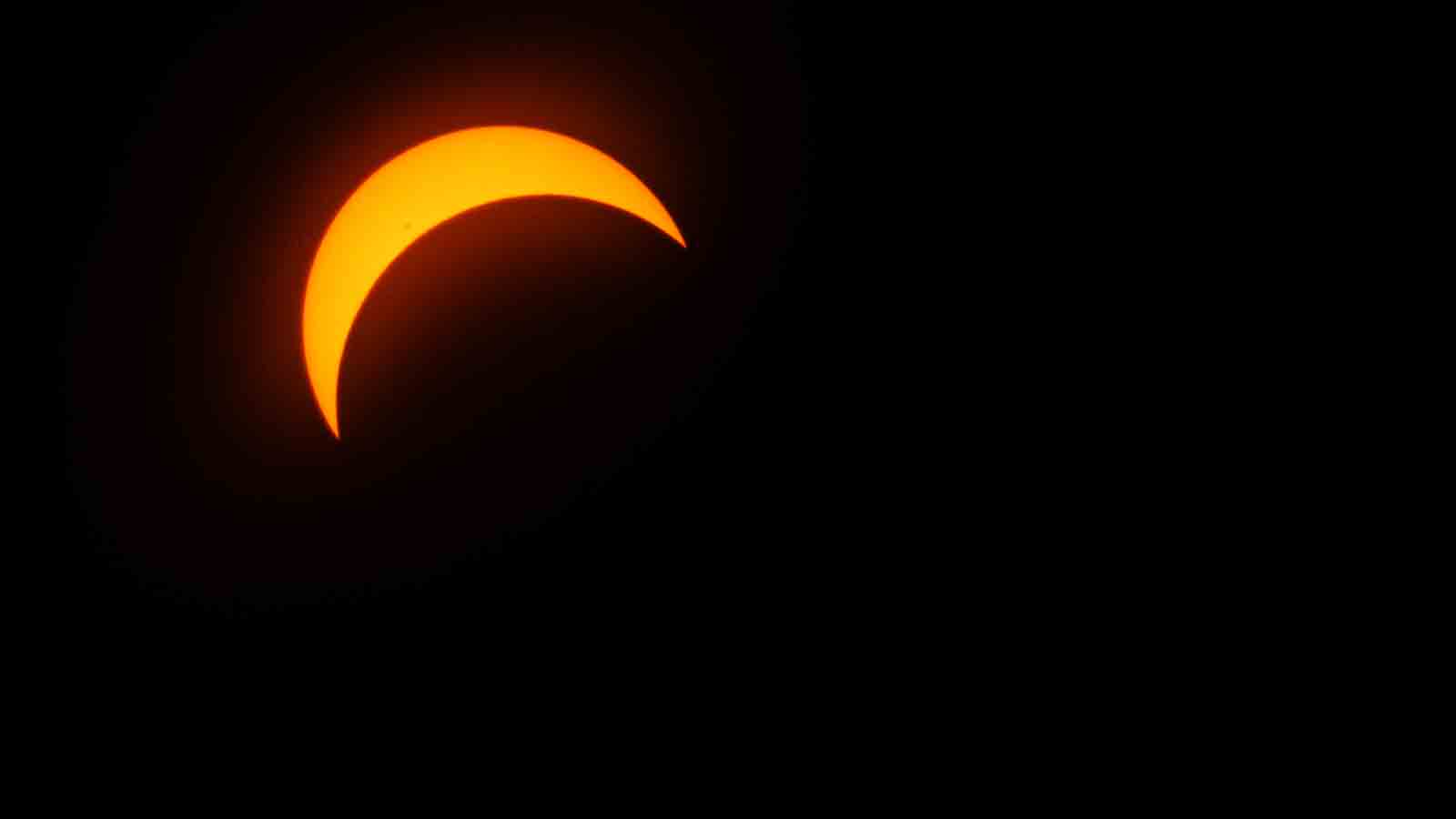What time will the April solar eclipse peak in the Chicago area and across Illinois? The timing will depend largely on where you live.
Many in Illinois will see a partial eclipse, while some cities fall within the "path of totality," meaning the sky will go dark as the sun is completely covered by the moon for several minutes.
The rare astronomical phenomenon is taking place across a wide swath of the United States, marking what NBC 5 Storm Team Meteorologist Kevin Jeanes called "the greatest solar eclipse across the U.S. in our lifetime."
The eclipse will take place on Monday, April 8, with parts of southern Illinois and central Indiana included in the area of totality. According to NASA scientists, a total solar eclipse occurs when the new moon intersects the path of the sun in the sky, causing the sun to be partially and then nearly completely blocked from view.
Feeling out of the loop? We'll catch you up on the Chicago news you need to know. Sign up for the weekly Chicago Catch-Up newsletter here.
In Carbondale, the largest Illinois city included in the path, totality will commence at approximately 1:59 p.m.
During this time, stargazers will be able to look at the eclipse without any aid whatsoever, with darkened skies and the famed “corona” blazing around the edges of the moon.
This period will last just a few minutes. Totality is expected to end at approximately 2:03 p.m. as the eclipse follows a diagonal line over Fairfeld and exits at Mount Carmel, according to state officials.
Solar Eclipse 2024
If you'll be in the Chicago area and won't be able to see the eclipse in totality, there is a silver lining. The partial eclipse will be visible for a while longer.
The partial eclipse will actually begin at around 12:51 p.m. and last until 3:22 p.m., giving folks approximately 150 minutes of viewing time.
For areas outside of the path of totality, it will not be safe to view the eclipse without glasses or other tools.
Here's a look at timing for various cities in the Chicago area, according to Time and Date.
Aurora
Partial eclipse begins: 12:50:22
Maximum eclipse: 14:06:37
Partial eclipse ends: 15:21:07
DeKalb
Partial eclipse begins: 12:50:03
Maximum eclipse: 14:06:09
Partial eclipse ends: 15:20:36
Evanston
Partial eclipse begins: 12:51:38
Maximum eclipse: 14:07:45
Partial eclipse ends: 15:22:00
Fox Lake
Partial eclipse begins: 12:51:29
Maximum eclipse: 14:07:20
Partial eclipse ends: 15:21:26
Lombard
Partial eclipse begins: 12:50:57
Maximum eclipse: 14:07:09
Partial eclipse ends: 15:21:33
Orland Park
Partial eclipse begins: 12:50:48
Maximum eclipse: 14:07:10
Partial eclipse ends: 15:21:42
Plainfield
Partial eclipse begins: 12:50:19
Maximum eclipse: 14:06:39
Partial eclipse ends: 15:21:14
Schaumburg
Partial eclipse begins: 12:51:05
Maximum eclipse: 14:07:10
Partial eclipse ends: 15:21:29
Wheaton
Partial eclipse begins: 12:50:48
Maximum eclipse: 14:07:00
Partial eclipse ends: 15:21:25
(Check your city here)
For those looking to be in the path of totality, here's a list of Illinois cities that fall in that category, according to the Illinois DNR:
Carbondale
Totality begins: 13:59:15
Maximum eclipse: 14:01:20
Totality ends: 14:03:25
Makanda
Totality begins: 13:59:09
Maximum eclipse: 14:01:14
Totality ends: 14:03:19
Alto Pass
Totality begins: 13:58:56
Maximum eclipse: 14:01:01
Totality ends: 14:03:06
Fairfield
Totality begins: 14:01:19
Maximum eclipse: 14:03:21
Totality ends: 14:05:23
Olney
Totality begins: 14:02:12
Maximum eclipse: 14:04:07
Totality ends: 14:06:03
Golconda
Totality begins: 14:00:39
Maximum eclipse: 14:02:04
Totality ends: 14:03:30
Effingham
Totality begins: 14:03:25
Maximum eclipse: 14:03:49
Totality ends: 14:04:13
Mt. Vernon
Totality begins: 14:00:35
Maximum eclipse: 14:02:28
Totality ends: 14:04:20
Marion
Totality begins: 14:01:53
Maximum eclipse: 14:03:54
Totality ends: 14:05:56
Illinois isn't a stranger to eclipses. In fact, the southern portion of the state has been dubbed "the eclipse crossroads of America," according to the Illinois Department of National Resources.
While solar eclipses typically occur just twice in a person's lifetime, parts of the state, including Carbondale, saw one in the past decade.
The Carbondale area was also included on the path of totality for that eclipse, which occurred in 2017. While it may seem short, totality for this year's eclipse will last approximately 4 minutes and 9 seconds.
That's actually double the length of the 2017 eclipse. Totality lasted 2 minutes and 42 seconds in the Carbondale area that year, and believe it or not -- that was the longest period of totality out of anywhere in the U.S.
But that won't be the same case this year.
Totality will be the longest in an area near Torreón, Mexico -- at 4 minutes, 28 seconds. This time around, it'll be easier for more people to see the eclipse in totality, according to NASA.
Its path will pass over more cities and densely populated areas than the 2017 eclipse did.
If there's any way you can see the eclipse in totality, you just might want to find a way to make it work. The next eclipse after April's won't occur for a long while -- 20 years. That total eclipse will happen on Aug. 23, 2044.



